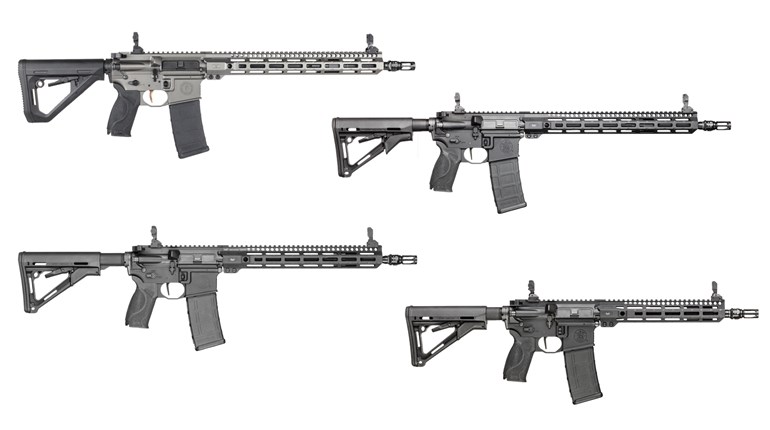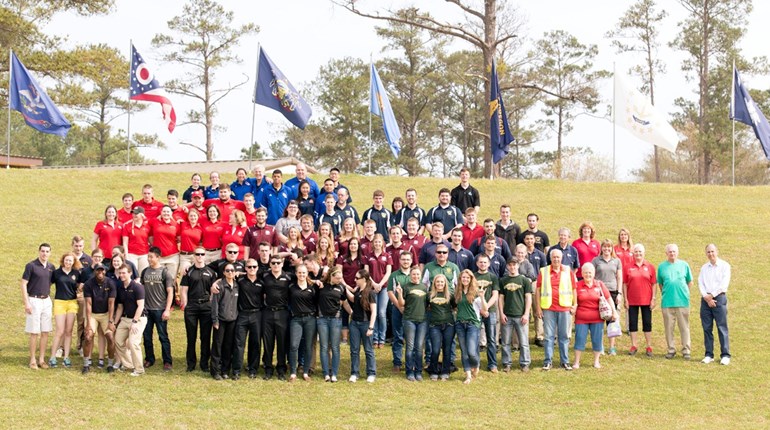
And yes, I am aware you cannot completely remove the sound and that a more accurate term is suppressor. For most of the 20th century, the image of a movie villain (commonly clad in an overcoat, Borsalino hat and black gloves) screwing a sinister-looking black tube on the end of a menacing black pistol was common. Certainly that must have happened, because the federal government saw fit to pass laws prohibiting unregistered suppressors as far back as the mid-1930s. Ten years into the new century, we have come to accept them as devices that are difficult to own for civilians, but are amazingly useful gear for police and military personnel.
The violent expulsion of propellant gas at the muzzle of a firearm when the bullet exits is noisy. Modern suppressors come in various sizes and shapes, but generally work on the same basic principle: By venting the gas into a larger chamber, then slowing it down and breaking it up over a short period of time, that sharp crack is greatly reduced. This is usually done by baffles, wipes and expansion chambers—or a combination thereof—inside the suppressor tube, or "can." Suppressors usually require careful maintenance and are most effective when the bullet exits the barrel at lower velocities, but they can really quiet down an otherwise loud party. I recall a pleasant autumn afternoon shooting a Heckler & Koch MP5SD owned by Col. Rex Applegate. It sounded like a very loud hacking cough, but I was particularly conscious of the rhythmic clacking of that MP5's roller-lock action at work.
In our current Middle Eastern difficulties, our armed services are using many kinds of suppressors. The CQB specialists often use them on M4s and SMGs for raids and inside buildings. Probably more often, we see them on rifles in use by various types of snipers. In this role, an unusual characteristic of at least some suppressor models comes out. At the same time they reduce the noise, or sonic signature, they can confuse the guy in the target area as to the location from which the shot was fired, by sort of displacing the sound. This is an enormous tactical advantage.
Suppose a sniper sees several enemy combatants at distance. He might be able to engage one, work his bolt and observe through the scope. Depending on his hit and the enemy response, he might be able to squeeze off another aimed shot. And another, and...well, you get my drift. Having never been downrange when this kind of shooting was going on, I can't say how this would feel. No one ever shot at me with a suppressed weapon that I know of—if they did, they missed.
Oddly enough, while I was working on this month's column, I stumbled on a very old example of this exact phenomenon. In October 1944, a handful of British and Australian commandos from the mysterious Z Force was trapped on a tiny island off the coast of Singapore. They had completed only a portion of their mission—to destroy Japanese shipping at Man-of-War Anchorage—and had conducted a running fight across the ocean back to where a submarine was to pick them up. The force had just evacuated two of its badly wounded comrades to another island after a fight with a small boatful of Japanese soldiers. When a couple of the enemy soldiers made it off the island, the three remaining commandos took stock of their situation. It was only a matter of time before the enemy returned in force—not a good situation.
The leader of the gallant trio was a legend in the British army, Lt. Col. Ivan Lyon. An officer of the Gordon Highlanders and a veteran of much covert-action work in Southeast Asia, Lyon fought with a cold fury, fueled in part by the knowledge his wife and son were imprisoned in Singapore. He was undoubtedly aware he was facing the fight of his life. The island was lightly forested and had only one usable landing beach. Lyon placed one soldier in a hard-to-see ditch along one side of the landing point and he and the other commando climbed high into the branches of a great tree. All three were armed with hand grenades and suppressed Sten submachine guns. Fortunately, each of them had many magazines for those remarkable little guns. Finally, more than 100 enemy infantry soldiers showed up.
The battle raged for more than four hours. For all but the last few, the enemy could not determine where the 9 mm bullets were coming from. Accounts are incomplete, but my guess is Lyon and his partners were exercising good fire discipline—one or two shots at a time, then hide again in the branches. The phenomenon of displaced sound might be a factor in the success of the technique. Eventually, the Japanese figured it out and applied their firepower in the right places and Lyon and his partner were blown out of their hides and killed. The other Brit was severely wounded, but captured and evacuated. My reference says more than 60 enemy soldiers were killed by determined, disciplined and suppressed fire of a light infantry firearm.
It would seem the suppressor just might be a handy adjunct to a guy's fightin' iron.





































